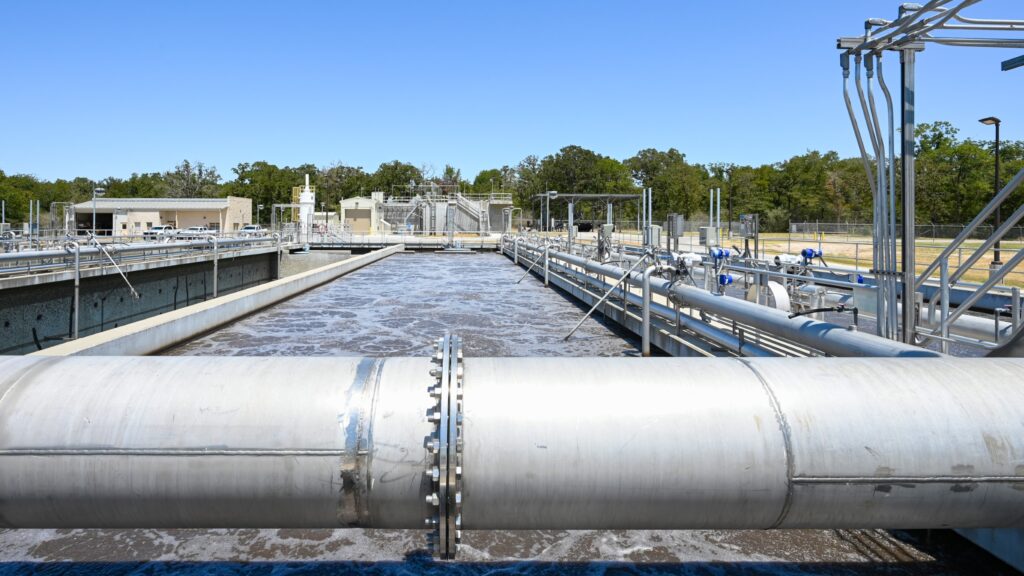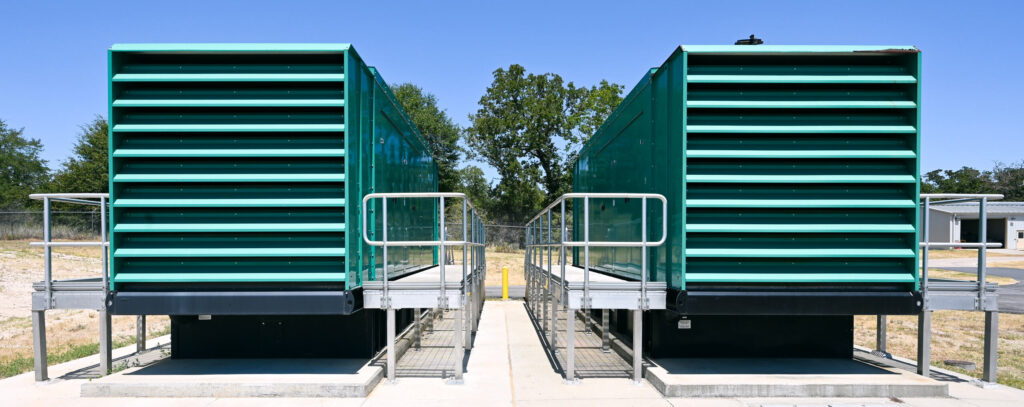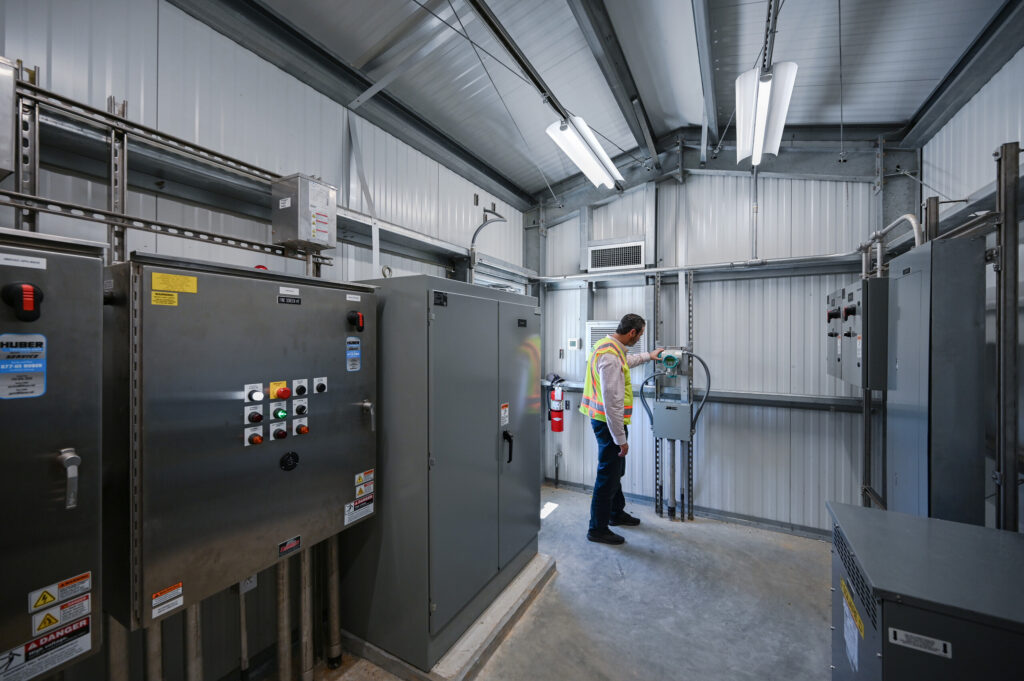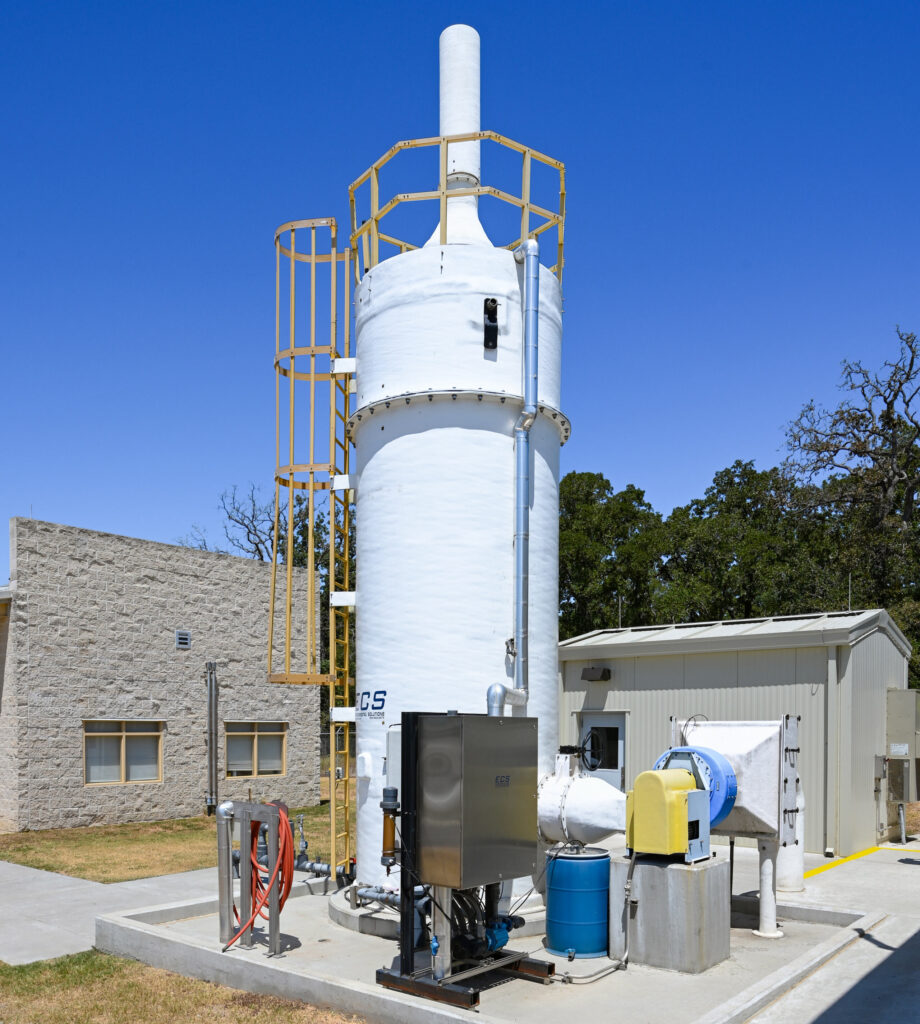Video: Treatment Plant Expansion Meets College Station’s Growing Needs
The City of College Station celebrated the official opening of its newly expanded Lick Creek Wastewater Treatment Plant during a ribbon cutting ceremony on October 20. The expansion more than doubles the plant’s existing capacity to serve the City’s growing needs.
From completing a Wastewater Master Plan in 2015 to design of the plant in 2017, College Station worked with Freese and Nichols on planning and implementing the expansion project.
Construction on the $39 million project began in 2019, with substantial completion in June 2023. If the project were to begin today, it would cost almost twice as much due to inflation.
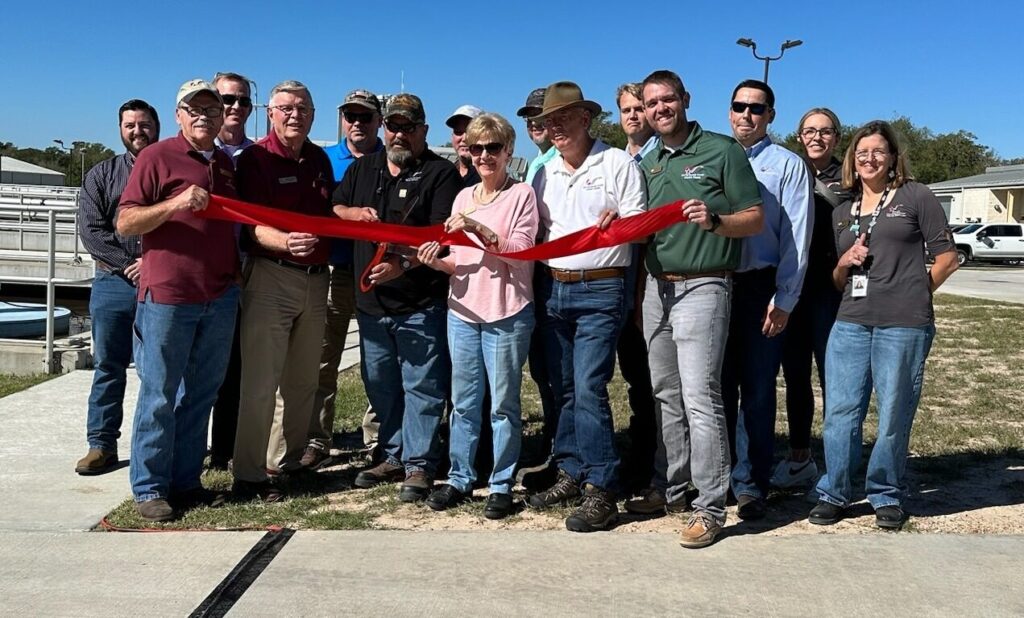
“Once the project was really initiated, working with the design team and working with our staff to make sure we stayed on track was really critical to the finances of the project,” said Bryan Woods, College Station City Manager. “Also just being able to grow as a City, and not having to wait and make decisions on infrastructure because we know we have this in place.”
The expansion increases the plant’s existing capacity from 2 MGD (Million Gallons per Day) to 5 MGD per day. To put that into perspective, that is the equivalent of treating 7.5 Olympic sized swimming pools each day.
“The original plant wasn’t initially designed to be expanded to such capacity,” said Gennady Boksiner, Freese and Nichols Project Manager. “We accomplished the expansion by only needing one new facility, which is the headworks facility. We were able to repurpose everything else.”
“I think the most important thing is the functionality and redundancy that we’ve built with this very substantial expansion”, said John Nichols, City of College Station Mayor. “We need to have the things that people don’t see, like wastewater treatment facilities in the ground ready to go well before we hit that limit.”
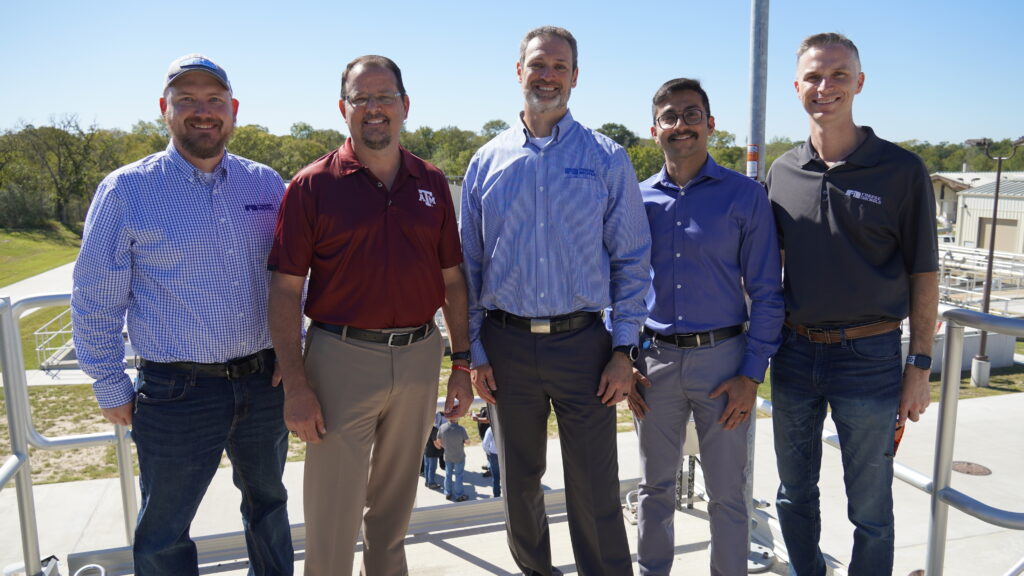
At the heart of the Lick Creek Wastewater Plant are six aeration basins that receive effluent and remove critical suspended and dissolved pollutants. Effluent is sent to a clarifier, and ultraviolet disinfection follows.
Over three hundred ultraviolet bulbs destroy or inactivate remaining pathogens down to the TCEQ regulated limit before the final effluent is discharged into Alum Creek. By that time, what’s going in the creek is higher quality that what’s already in the stream.
Disinfected final effluent is used for various plant needs, such as equipment cleaning and utility stations. This minimizes the reliance on potable water.
Foul air generated by wastewater and treatment processes is contained and 99% of odorous compounds are removed before treated air is discharged to the atmosphere.
In case of a power outage, two, 600-kilowatt diesel engine generators will automatically initiate and supply electricity to the entire plant. This is enough to power 1,000 homes.
The facility has been master planned to allow for additional expansions up to 12 MGD beyond the current phase expansion, to serve City’s ultimate treatment needs. This is the first of three planned expansions.
“When this plant reaches its ultimate capacity it will be able to serve 50-thousand residents and that will be close to doubling the current capacity of the City’s ability to do that,” Gennady said. “It’s always good to set up the City for this kind of growth without them having to work about it last minute and having the ability to bring additional developments and commerce and industries.”
Freese and Nichols worked with the City to provide pre-design, design, construction, permitting and startup services for the expansion of the Lick Creek Wastewater Treatment Plant.
“This is one of the core things that we do in a City and as a utility,” Bryan said. “It’s something that people don’t think of every day, but it’s critical to all the other great things we do as a City. If the basic things don’t work, then the stuff that people see doesn’t. It’s really fulfilling, and I know that it’s a great investment made by our community and will help them in the future.”


